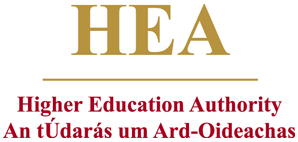Céad slán dhuit, a Abhainn Mhór - Brighid Ní Mháille
Recording: [Download audio file]
[Download AIFF audio file (of processed ‘user’ version)]
[Download AIFF audio file (of archive version)]
Transcript
Céad slán dhuit, a Abhainn Mhór, sé mo léan gan mé anocht ag do thaobh,
(Is ann) a gheofainnse spórt, ó, tráthnónaí is, ó, go mall tíocht
na hoích',
Le gloine ar an mbord ann le comhluadar geanúil 'na suí.
Ó, is nach mise atá sáraithe, ní náir dhom dhá mbris(fí) mo
chroí,
Ó, i bhfad ó mo mhuintir, ó, is gan áit agam ag a ligfinn mo scíth,
Is tá mo shúil le Rí na nGrásta (nach mbeidh fán orainn) ach
tamall is caidé an bhrí?
Tá mo ghuailleachaí-sa gointí, is ní áirím tá m'ioscaidí fann,
Tá mo rúitíní gearrthaí ó shíorshiúl na mbóithrí[1]
go mall.
Translation
Farewell, Owenmore River, alas that I am not beside you tonight,
There I would find enjoyment, oh, in the evening and as the night slowly
falls,
With a glass on the table, sitting with good company.
Oh, I am exhausted, it would be no wonder if my heart were to break,
Oh, far from my people and with no place to rest,
And I hope to God of Grace that I will not be wandering for long, but what does it
matter?
My shoulders are injured, not to mention my weak knees,
My ankles are cut from constantly traipsing the roads.
Footnotes
Leg. mbóirsí? Cf. Éamonn Mhac an Fhailigh, The Irish of Erris, county Mayo (Dublin, 1968; repr. 1980), § 399. (Back)Commentary
This song is published under various titles including 'An Abhainn Mhór', 'Murach mo Dhíthchéile' and 'An Cóta Mór Stróicthe'. A variety of accounts relating to the song from the National Folklore Collection have been published in Ríonach uí Ógáin, Faoi rothaí na gréine (Dublin, 1999), 55-9. Different poets are attributed with the composition in these oral accounts, including Mícheál Bhan-Óige and Séamus Coscar. The folklore relating the story of the song is wide-ranging. For example, it could relate to a travelling drunk whose wife had little respect for him, or to a young Seán Mac Donncha who becomes a fugitive after killing a man named Burke by hitting him with an iron in reaction to an insult aimed at the young girl the poet was dancing with. Tomás Ó Concheanainn (Nua-dhuanaire III, (Dublin, 1978, repr. 1981), 86) dates the song to the early nineteenth century and provides two oral accounts of the song's background, each attributing it to Séamus 'ac Cosgair, who lived in Erris, county Mayo. Other published versions include: Micheál Ó Tiománaidhe, Abhráin Ghaedhilge an Iarthair (Dublin, 1906), no. 40; Domhnall Ó Fotharta, Siamsa an gheimhridh (Dublin, 1892), 88-92; Father Tomás Ó Ceallaigh, Ceol na nOileán (Dublin, 1931), 111-12; Micheál Ó Gallchobhair, 'Amhráin ó Iorrus', Béaloideas 10 (1940), 215-6; Seóirse Bodley, 'Technique and structure in 'sean-nós' singing', Irish Folk Music Studies: Éigse Cheol Tíre 1 (1972-3), 44-54: 48; Éamonn Mhac an Fhailigh, The Irish of Erris, Co. Mayo (Dublin, 1968, repr. 1980), 104-7.
Title in English: Farewell, Owenmore
Digital version published by: Doegen Records Web Project, Royal Irish Academy
Description of the Recording:
Speaker:
Brighid
Ní Mháille from Co.
Mayo
Person who made the recording:
Karl Tempel
Organizer and administrator of the recording scheme: The Royal Irish Academy
In collaboration with: Lautabteilung, Preußische Staatsbibliothek (now Lautarchiv,
Humboldt-Universität zu Berlin)
Recorded on 11-09-1930 at 15:45:00 in
University College, Galway. Recorded on 11-09-1930 at 15:45:00 in
University College, Galway.
Archive recording (ID LA_1130g2, from a shellac disk stored in
Galway) is 01:30 minutes long. Archive recording (ID LA_1130g2, from a shellac disk stored in
Galway) is 01:30 minutes long.
User recording (ID LA_1130g2, from a shellac disk stored in Galway)
is 01:26 minutes long. User recording (ID LA_1130g2, from a shellac disk stored in Galway)
is 01:26 minutes long.





